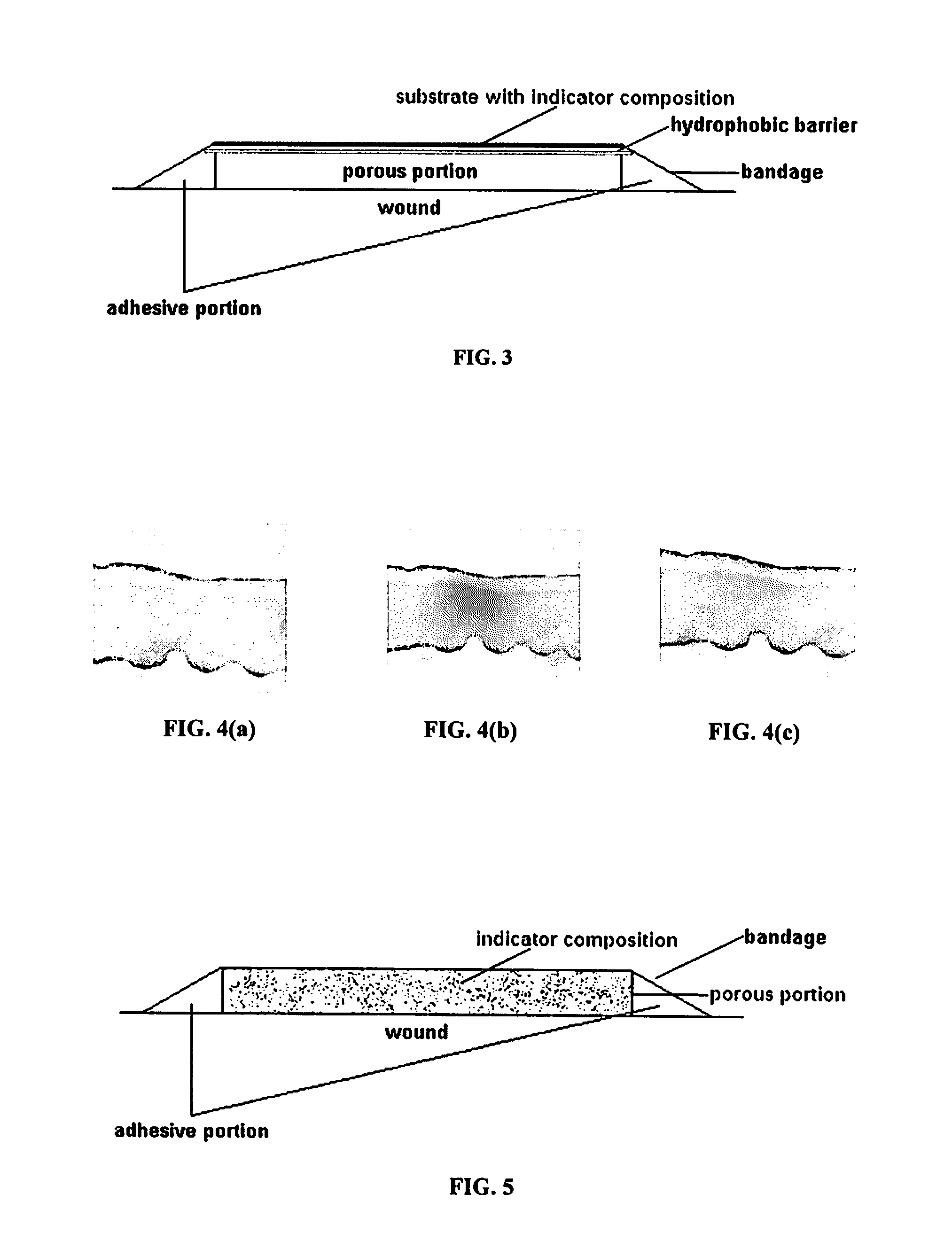Non-Invasive Colorimetric-Based Infection Detector And Infection Detecting Bandage
a colorimetric-based, non-invasive technology, applied in the field of colorimetric-based infection detectors, can solve the problems of affecting the treatment of many types of diseases and injuries, affecting the treatment effect, so as to achieve convenient and convenient treatment, the effect of easy application
- Summary
- Abstract
- Description
- Claims
- Application Information
AI Technical Summary
Benefits of technology
Problems solved by technology
Method used
Image
Examples
preparation examples
Example 1
[0093]HydroMed® D640 (by AdvanSource® biomaterials), a hydrophilic medical grade polyurethane, was dissolved in 95 / 5 absolute ethanol / DI water, so as to make a 2.5 wt. % polymer solution thereof. Then, Thymol Blue (the acid form of thymolsulphonephthalein), an indicator, was incorporated into the polymer solution in a sufficient amount so as to yield a 4 wt. % indicator / polymer solution. This polymer solution was then cast onto a glass plate, and the solvent allowed to evaporate, thereby providing a non-invasive, calorimetric infection detector.
example 2
[0094]Methyl Yellow (acid form), a pH indicatior, was dissolved in methanol, so as to yield a 1 mg / mL solution thereof. Then, a ˜1 cm2 piece of 20 micron pore size nylon (produced by GE Osmonics®) was soaked in the Methyl Yellow solution for one minute. The solvent was then allowed to evaporate, thereby providing a non-invasive, colorimetric infection detector.
example 3
[0095]HydroThane® 25-93A (by AdvanSource® biomaterials), a thermoplastic hydrogel, was dissolved in N,N′-dimethylacetamide, so as to make a polymer solution having 2.5% by weight of solids therein. Then, Thymol Blue (thymolsulphonephthalein, acid form), an indicator composition, was dissolved in the polymer solution, so as to yield a 4 wt. % indicator / polymer composition. The indicator / polymer solution was then added dropwise to a beaker of water. The resultant precipitate was collected for extrusion. This precipitate was then dried, compacted, and extruded, so as to provide a non-invasive, calorimetric infection detector.
PUM
| Property | Measurement | Unit |
|---|---|---|
| pKa | aaaaa | aaaaa |
| half life | aaaaa | aaaaa |
| color | aaaaa | aaaaa |
Abstract
Description
Claims
Application Information
 Login to View More
Login to View More - R&D
- Intellectual Property
- Life Sciences
- Materials
- Tech Scout
- Unparalleled Data Quality
- Higher Quality Content
- 60% Fewer Hallucinations
Browse by: Latest US Patents, China's latest patents, Technical Efficacy Thesaurus, Application Domain, Technology Topic, Popular Technical Reports.
© 2025 PatSnap. All rights reserved.Legal|Privacy policy|Modern Slavery Act Transparency Statement|Sitemap|About US| Contact US: help@patsnap.com



